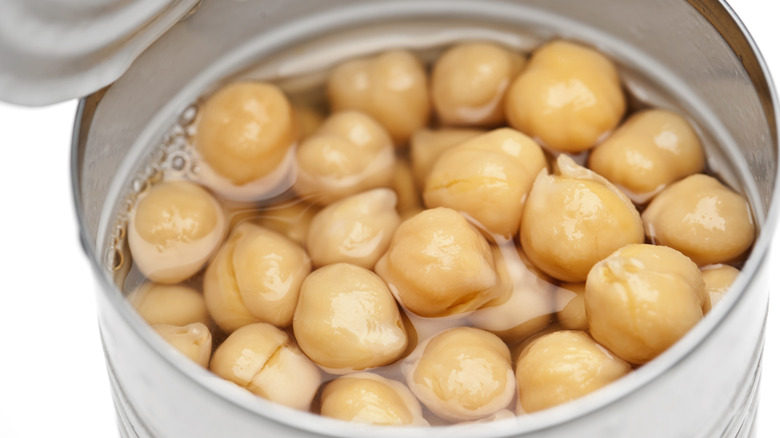Are Canned Beans Safe To Eat If You Don't Rinse The Foamy Stuff Off?
The convenience of canned beans can't be understated. Pop open a can, and you're already well on your way to a meal. But don't forget to drain that excess liquid from the can and rinse your beans thoroughly before using — right? Why do we rinse canned beans before using, and is it as imperative a step as we're led to believe? And what exactly is that foamy liquid in the can? While you certainly can drain beans and rinse the foam off them, it's not mandatory.
Draining and rinsing beans is ideal for dishes where they need to be a little more dry, such as salads. But otherwise, it's perfectly fine to dump the entire can's contents right into the pot or pan. The liquid holds onto nutrients such as vitamins and protein, so if you want a nutritious boost, keep it. Just mind the sodium content, as you may be getting up to 40% more sodium in your meal if you skip rinsing.
Why the foam in the can?
Why does the liquid in canned beans have that characteristic foam to it? This appearance and texture comes from starches, proteins, and another compound called "saponins" that all leach into the liquid in the process of cooking the beans.
Saponins are chemicals typically found in plants, especially legumes, such as navy beans and chickpeas. Other vegetables, such as garlic and asparagus, also have saponins. These chemicals tend to have a bitter taste, but they provide some health benefits, including cholesterol reduction and anti-inflammatory properties. They also foam up when submerged in water, which accounts for their name ("sapo" being Latin for "soap").
The combination of these ingredients provide a foamy appearance to the liquid that the beans were cooked in. The foam is perfectly safe to eat, though it the case of canned beans, it does typically contain high sodium levels. So if you're watching your blood pressure or otherwise need to avoid high-sodium foods, keep this in mind.
What about aquafaba?
You may have heard about a specific kind of bean liquid: aquafaba. This is typically the liquid that comes from cans of chickpeas (or the liquid that results in cooking chickpeas, if you're making it at home). Aquafaba has become a common vegan cooking and baking ingredient and a substitute for eggs, specifically egg whites.
Whipped aquafaba becomes a stiff foam, much like whipped cream or meringue. And when combined with sugar and other ingredients, it can be an excellent vegan substitute for either. It can also be subbed in for eggs in baked goods such as muffins and cakes. Though the liquid from other types of beans can be used to make aquafaba, chickpea aquafaba has the best appearance, texture, and flavor.
To substitute aquafaba for eggs, just use three tablespoons per egg; two tablespoons for the egg white and one for the yolk. (You won't taste the chickpea flavor after baking.)


